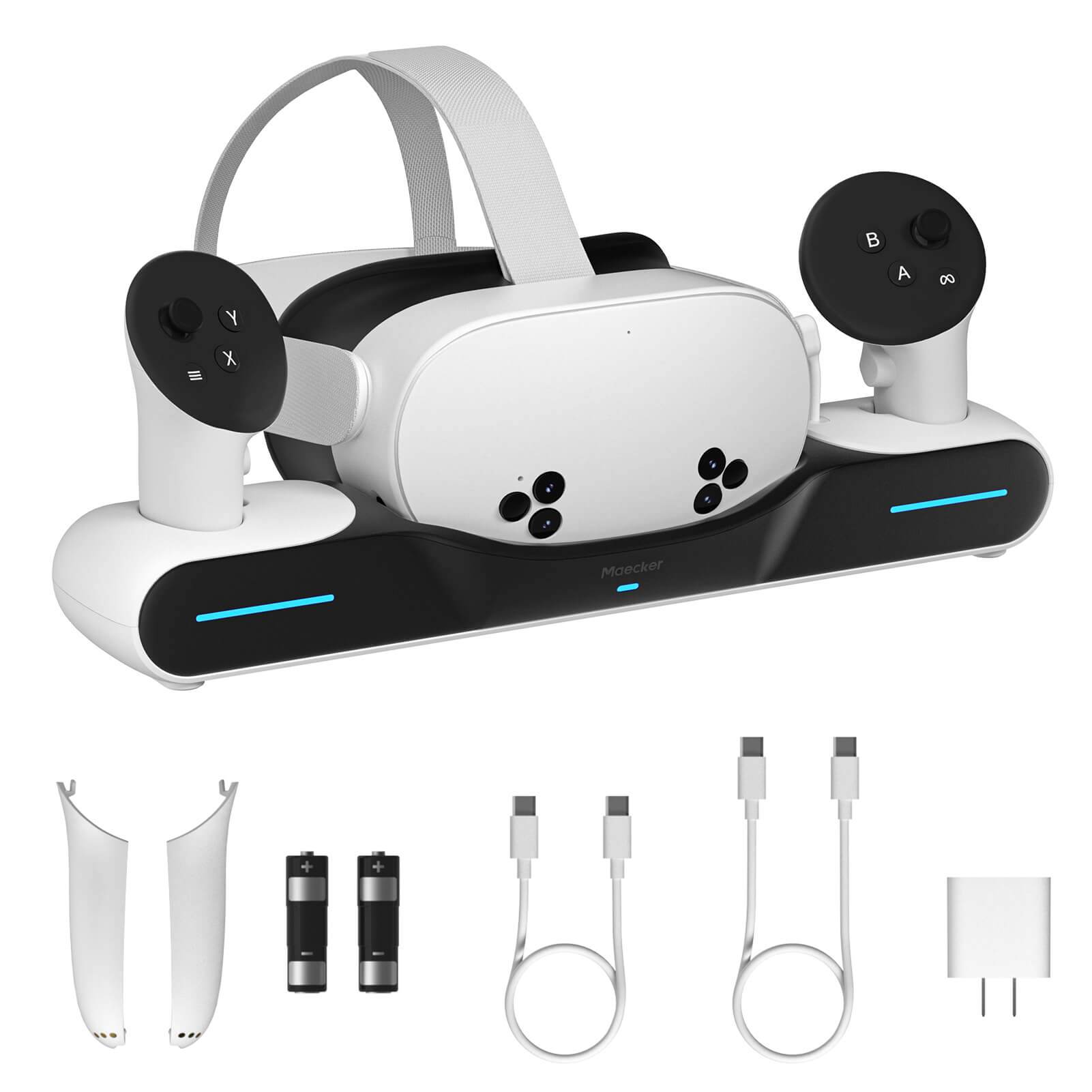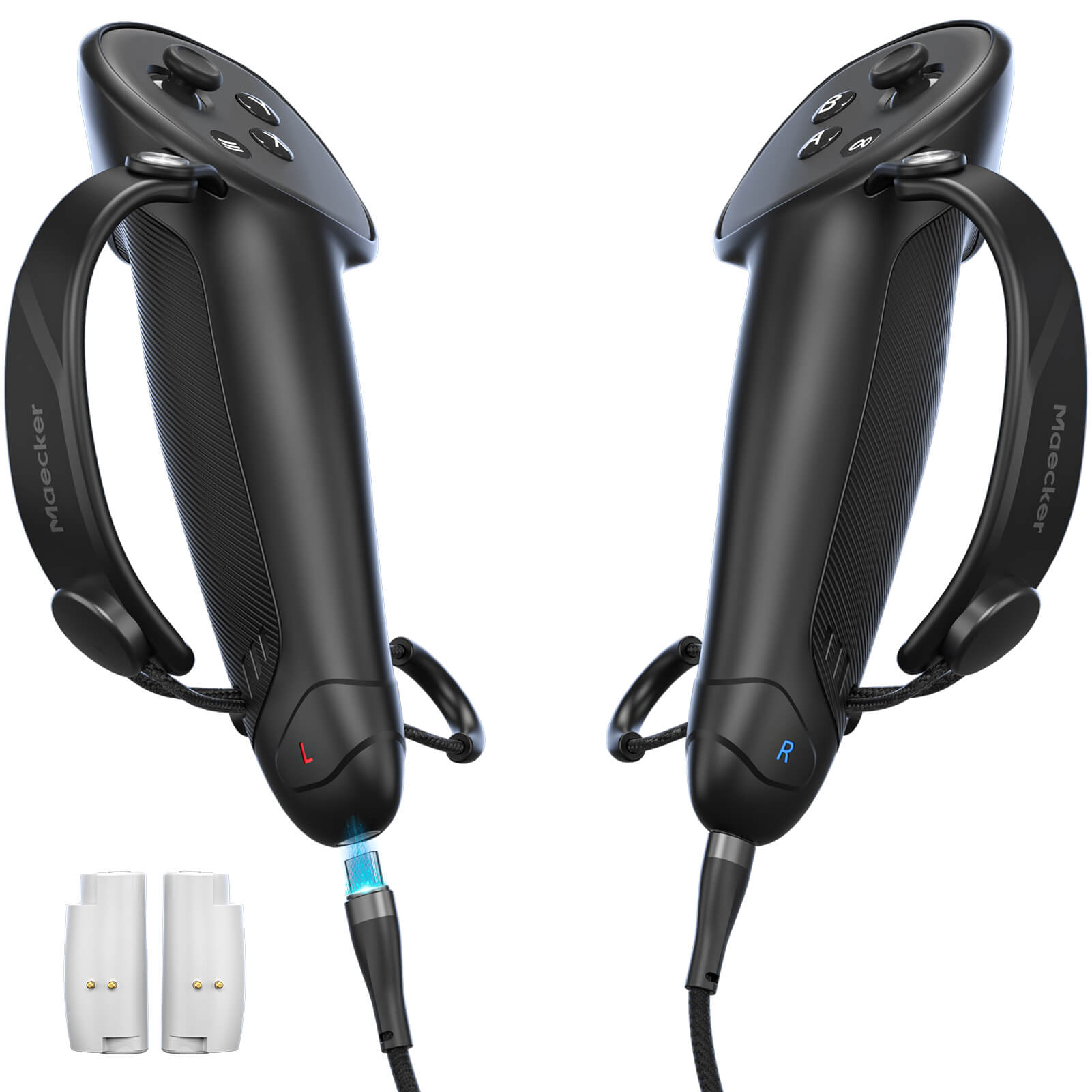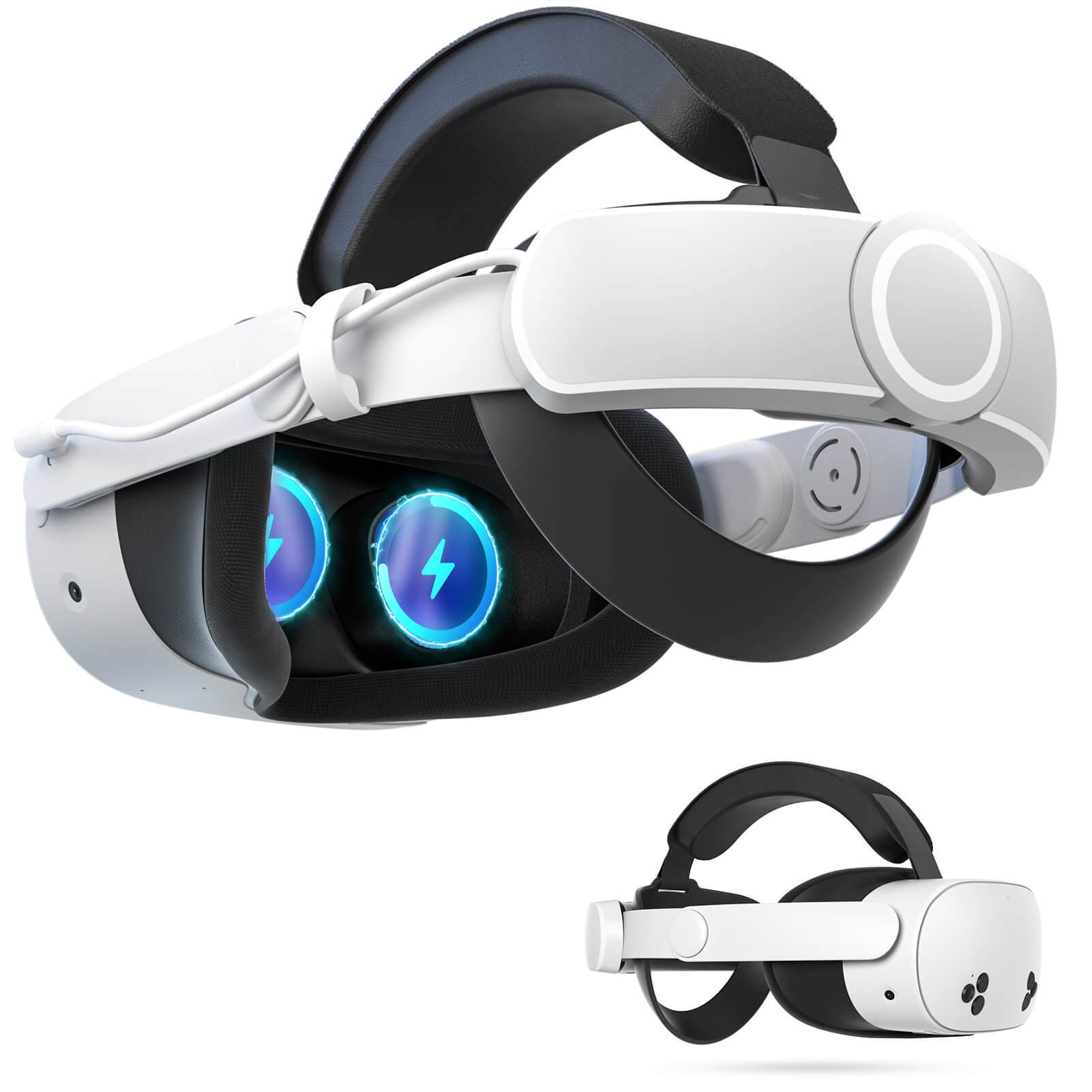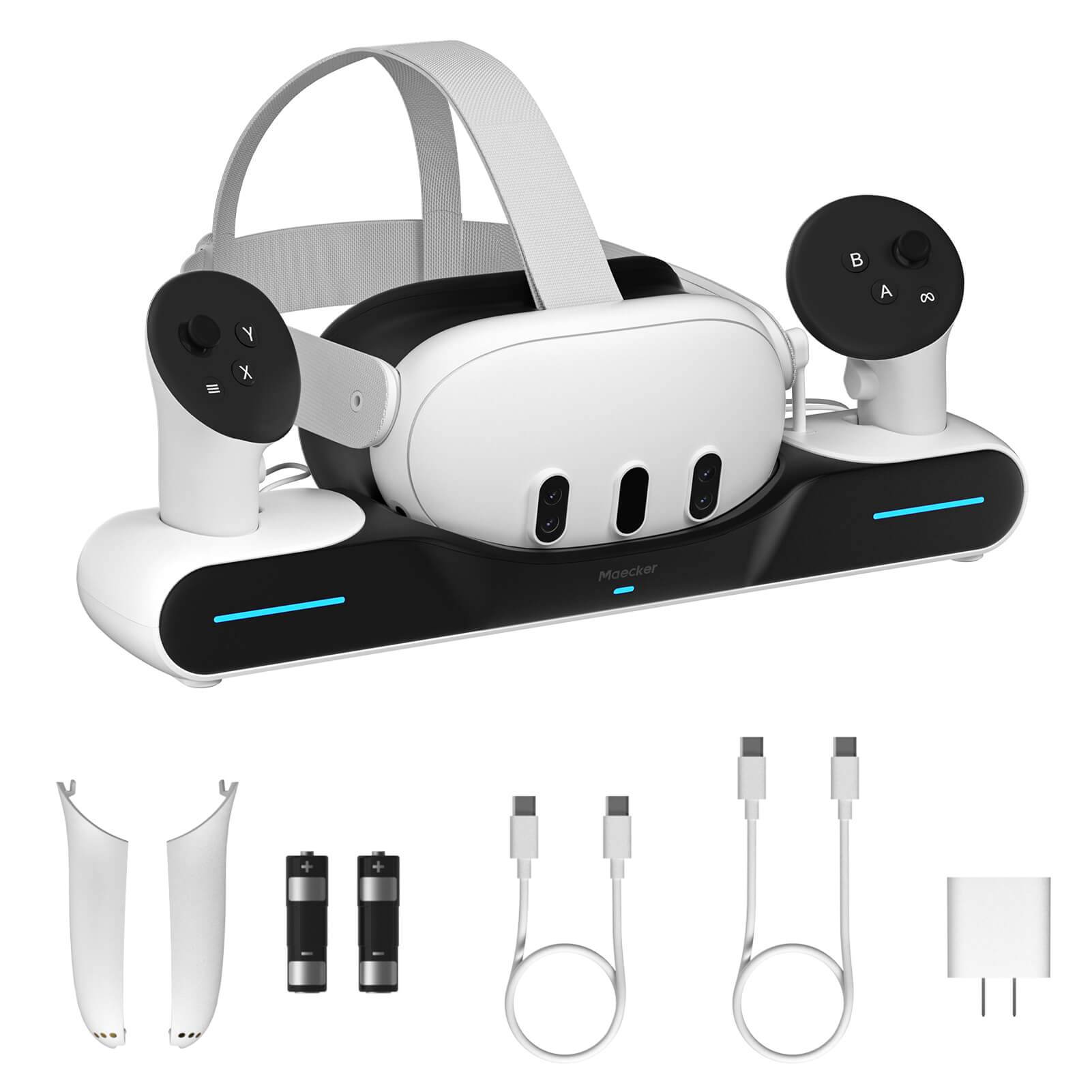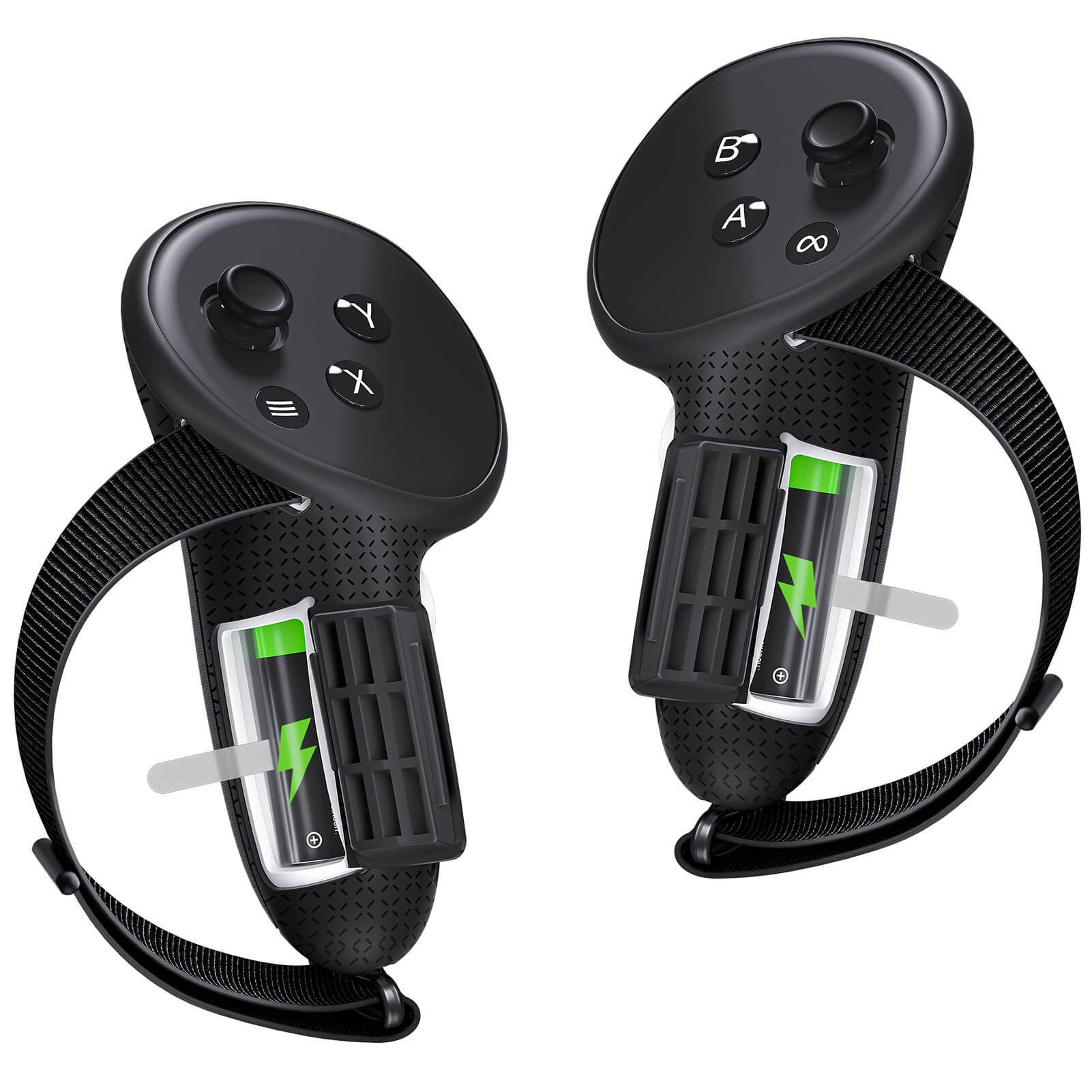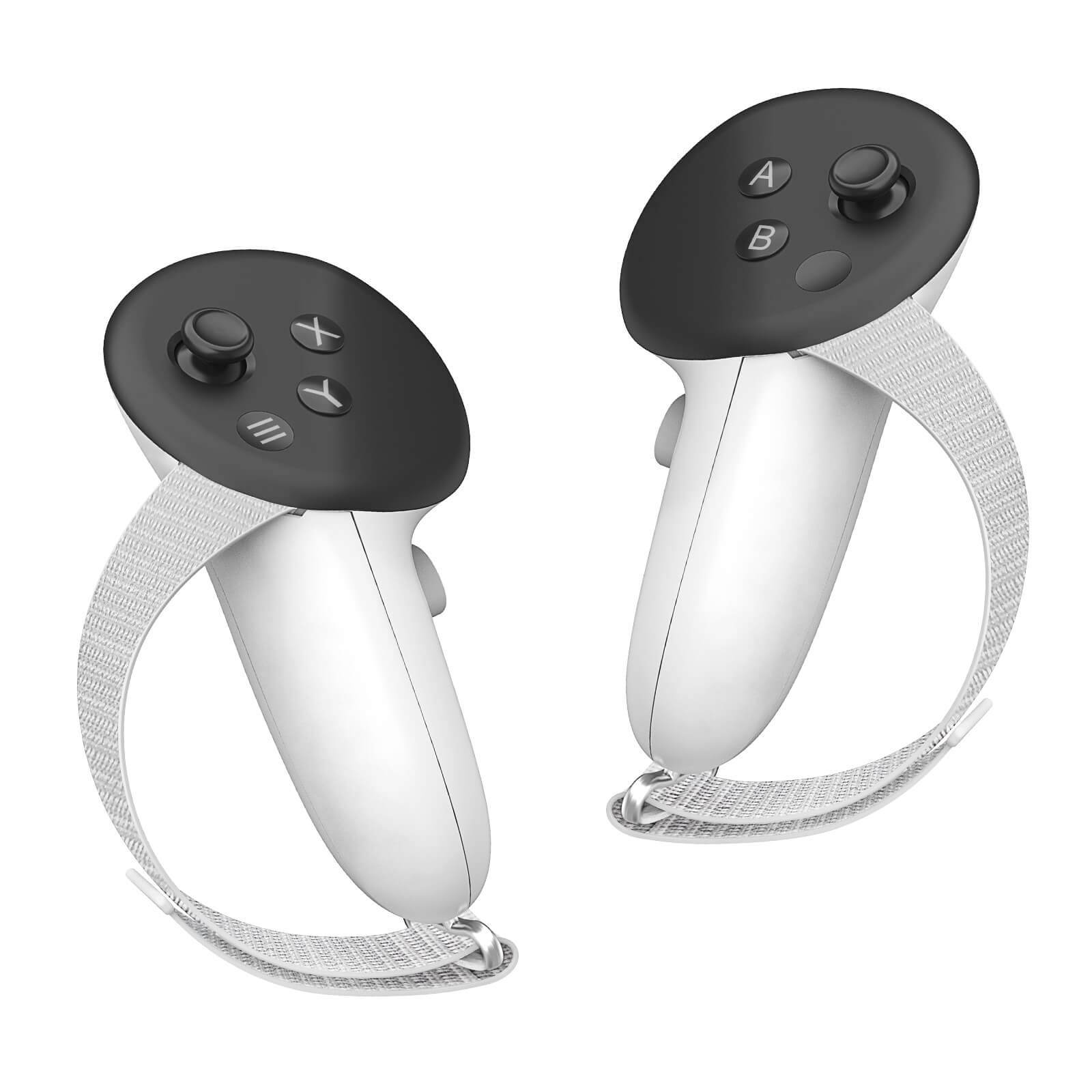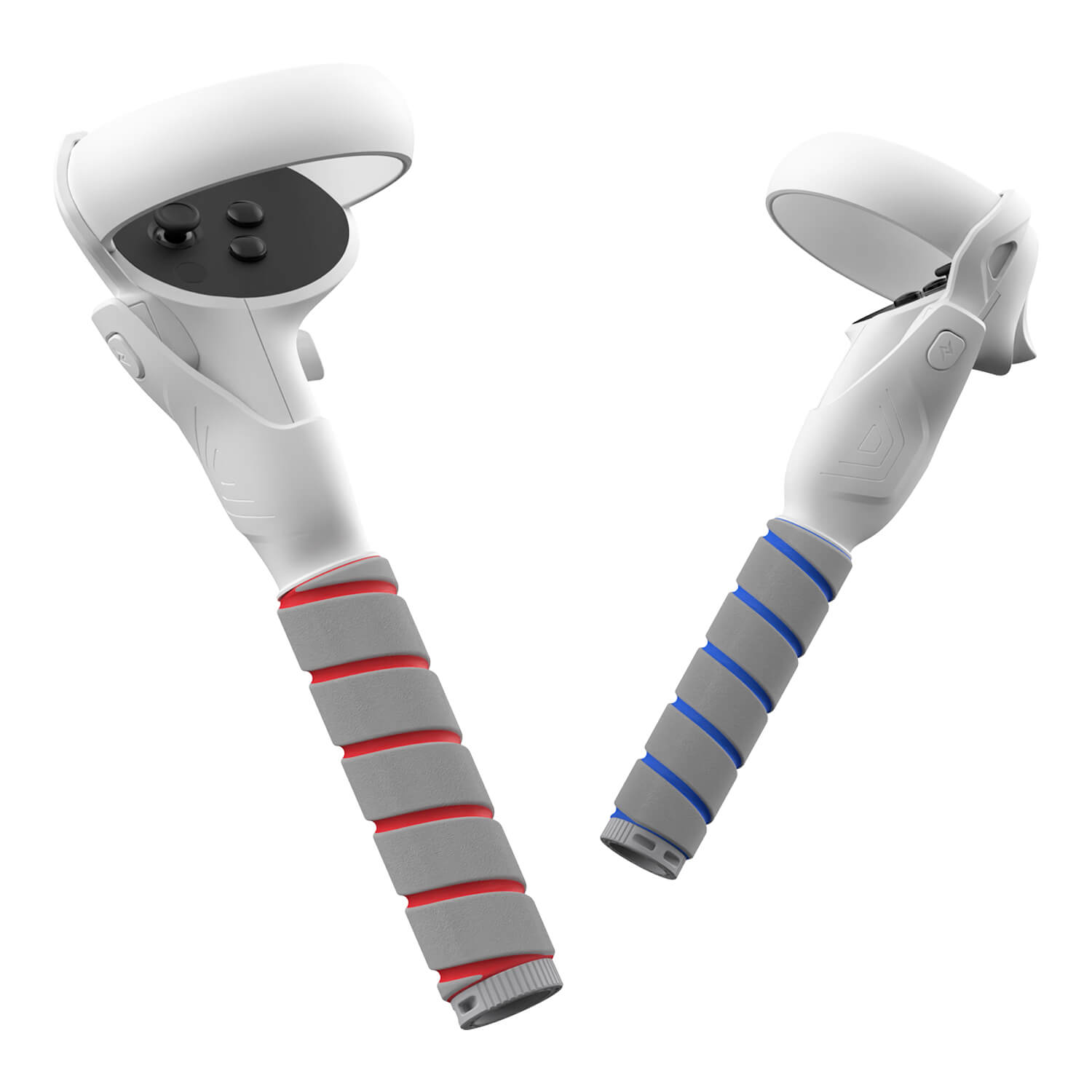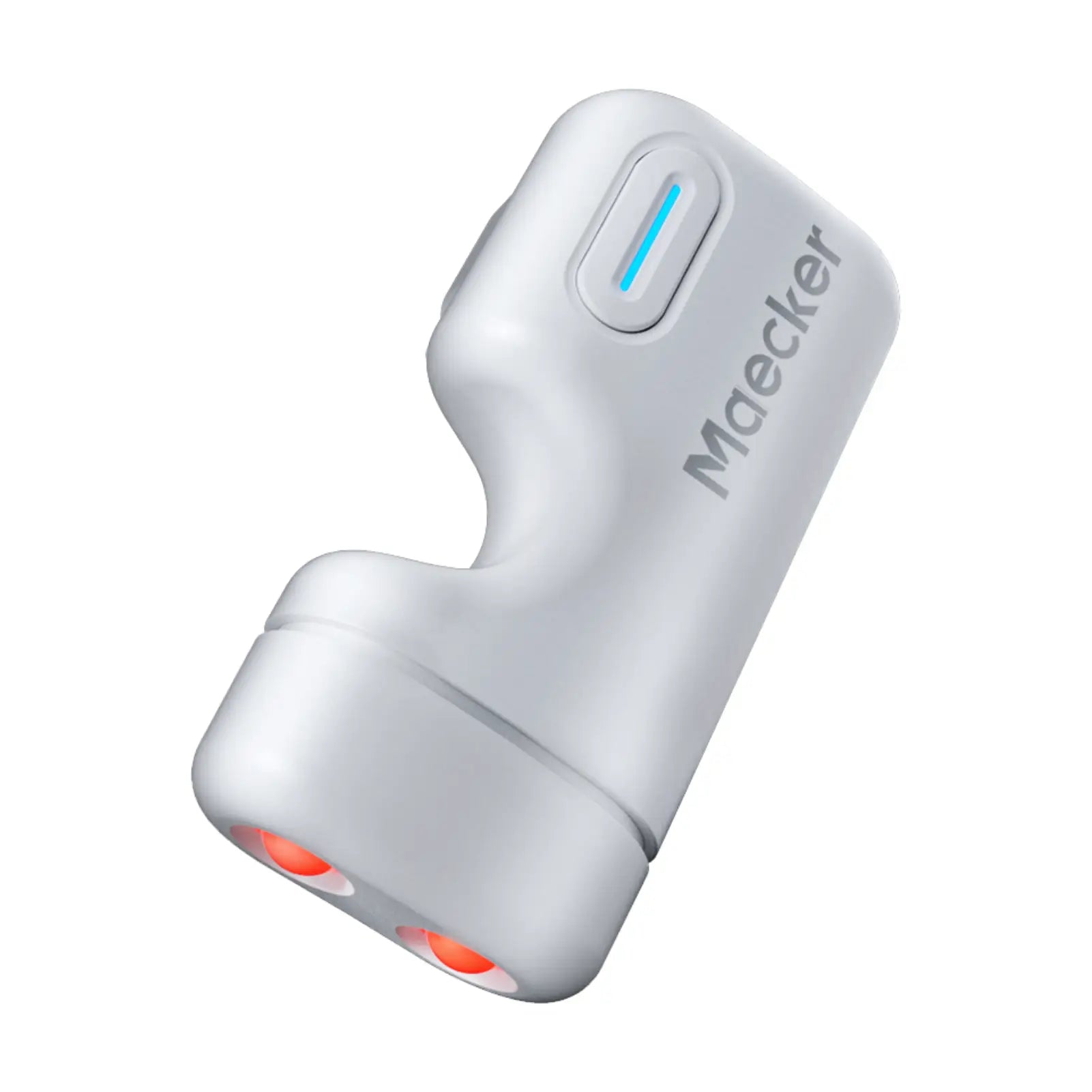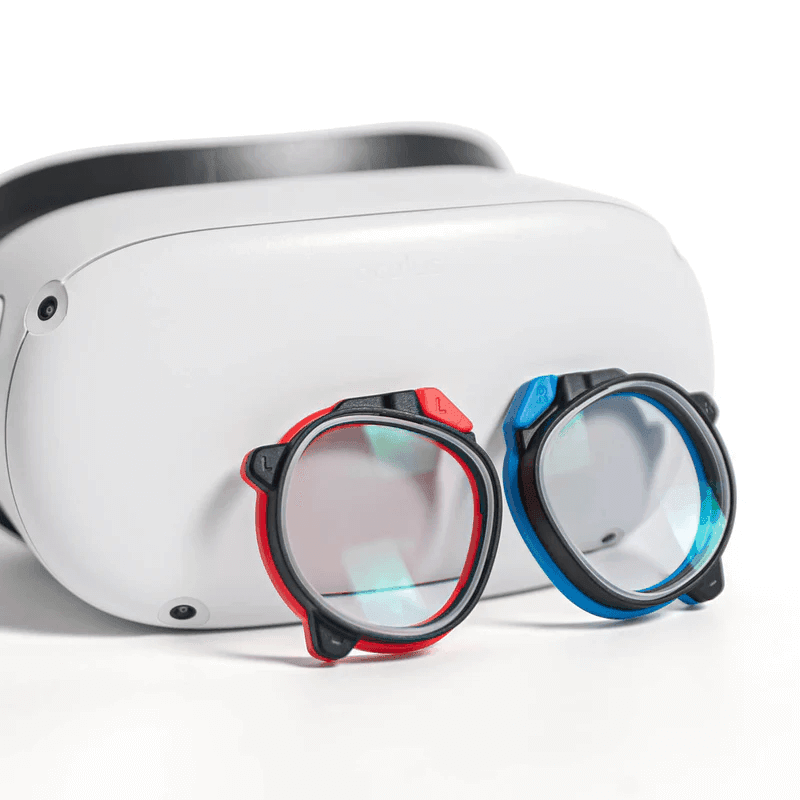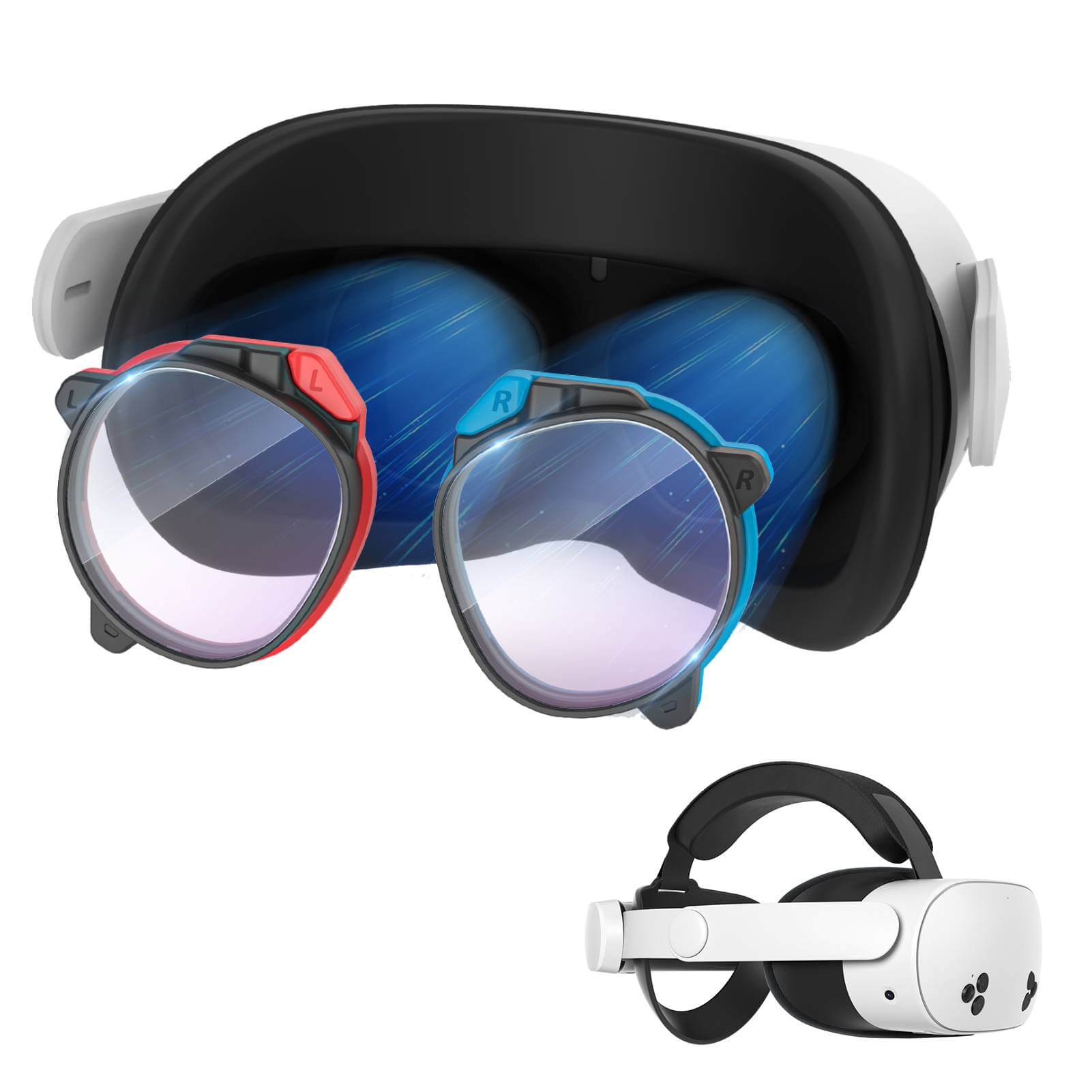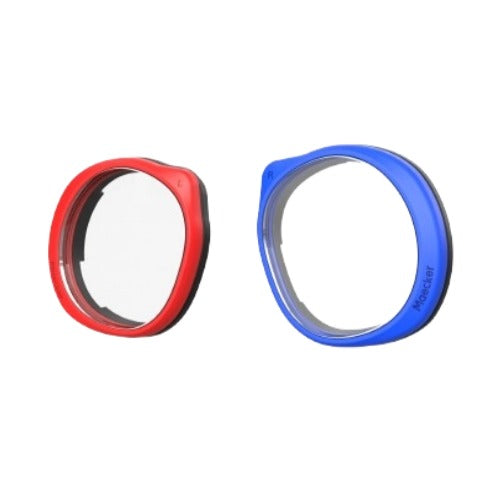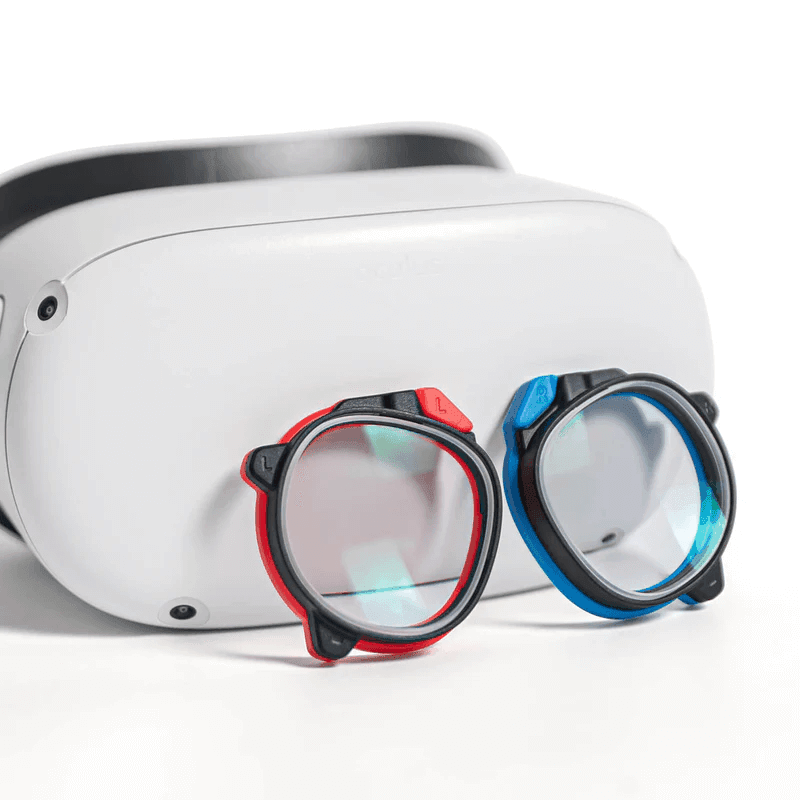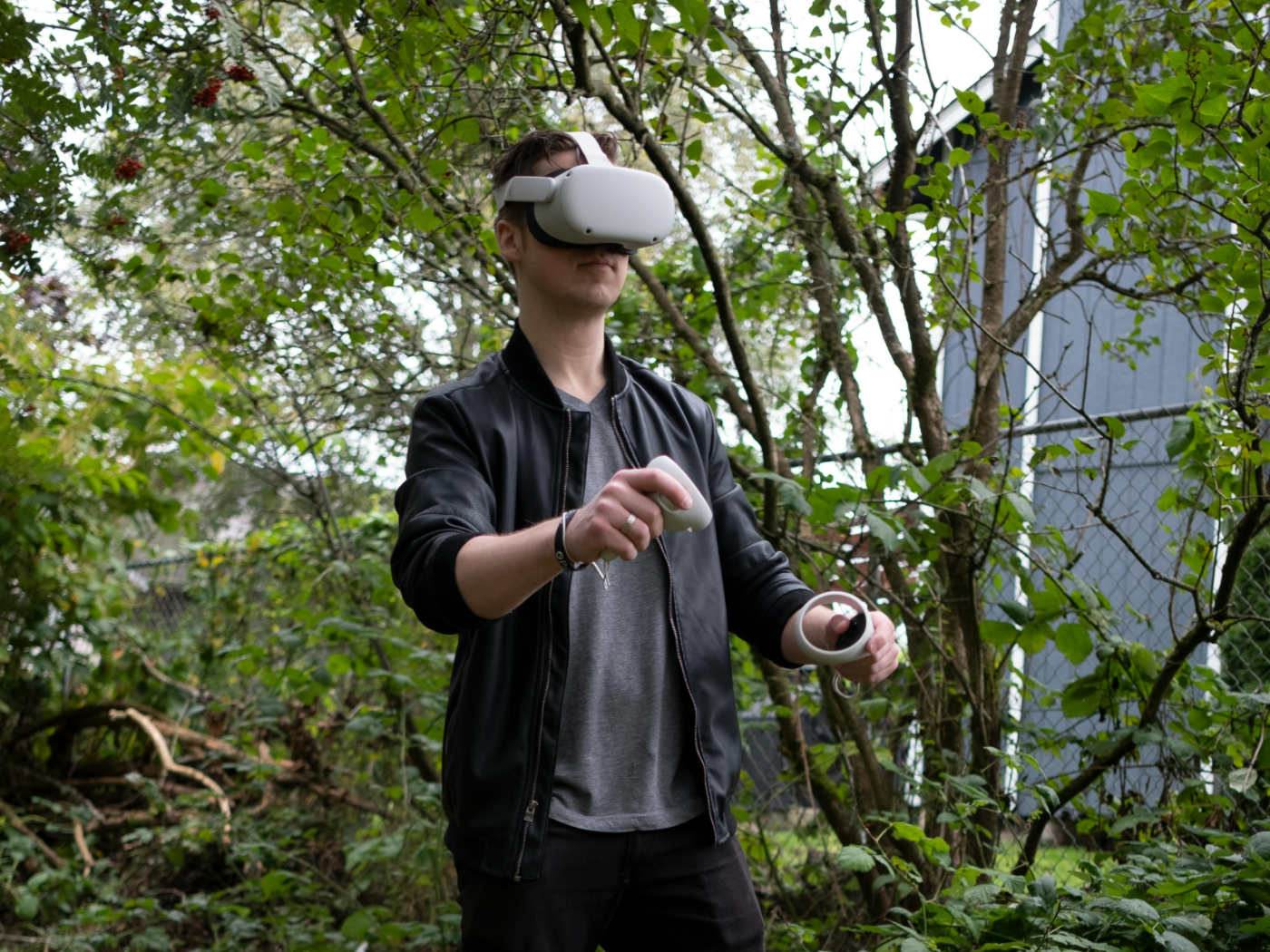La plupart des jeux de réalité virtuelle ne suivent que les mouvements de la tête et des mains, ce qui signifie qu'une grande partie de votre corps est laissée de côté. Cependant, l'ajout d'un suivi complet du corps permet à votre avatar d'imiter les mouvements de vos jambes, de votre torse et de vos pieds.
Ce guide couvrira tout ce que vous devez savoir pour configurer le suivi complet du corps sur vos casques Meta Quest, de l'utilisation des fonctionnalités intégrées avec Virtual Desktop aux options de suivi externes pour ceux qui recherchent une précision maximale.
1. Utilisation du bureau virtuel
L'un des moyens les plus simples de bénéficier du suivi complet du corps sur les appareils Quest est d'utiliser Virtual Desktop, qui propose une fonction de suivi intégrée. Ce logiciel permet au casque de suivre les mouvements en émulant les trackers SteamVR Vive, offrant ainsi un niveau de suivi corporel de base idéal pour les expériences VR occasionnelles. Voici en quoi le suivi de Virtual Desktop diffère en fonction du modèle de votre appareil.
Quête 3 - Suivi corporel de l'intérieur vers l'extérieur (IOBT)
Quest 3 est doté de la technologie Inside-Out Body Tracking (IOBT), qui utilise ses caméras latérales pour le suivi de base du haut du corps. Cette configuration capture les mouvements des coudes, du torse et de certaines autres parties du haut du corps, ce qui rend le mouvement de l'avatar en réalité virtuelle plus naturel.
- Points forts : Offre un suivi fiable pour le haut du corps.
- Limitations : Les mouvements du bas du corps sont suivis avec moins de précision en raison de l'absence de suivi dédié des pieds.
Quest 2 et Quest Pro - Cinématique inverse (IK)
Pour Quest 2 et Quest Pro, le suivi du corps repose sur la cinématique inverse, une méthode où le positionnement du corps est estimé en fonction de l'emplacement de la tête et des mains. Bien qu'il n'offre pas la même précision que le suivi du Quest 3, il offre tout de même un niveau de réalisme dans les mouvements des avatars qui améliore les interactions sociales en réalité virtuelle.
- Points forts : Solution de suivi abordable pour les mouvements corporels de base.
- Limitations : Moins précis que l'IOBT et ne suit pas les mouvements détaillés du bas du corps.
Étapes pour configurer un bureau virtuel pour le suivi corporel
![]()
-
Acheter et installer Virtual Desktop :
- Téléchargez Virtual Desktop depuis la boutique Meta Quest.
- Installez Virtual Desktop Streamer sur votre PC.
-
Configurer les paramètres du bureau virtuel :
- Ouvrez Virtual Desktop et accédez aux paramètres à l’aide du bouton rond situé sur le contrôleur Quest de gauche.
- Accédez à la section « Streaming ».
- Activez « Transférer les données de suivi vers le PC » et choisissez « Émuler les trackers SteamVR Vive ».
-
Lancer des applications VR :
- Démarrez VRChat ou d’autres applications compatibles et vous devriez voir les mouvements du haut de votre corps reflétés en VR.
2. Choisir des trackers externes
Pour les utilisateurs qui recherchent une plus grande précision, les trackers externes sont une option qui offre un suivi corporel plus complet et plus précis. Ces trackers fonctionnent avec SteamVR et nécessitent des stations de base pour capturer et relayer vos mouvements. Examinons quelques trackers externes populaires compatibles avec les appareils Quest.
1. Trackers HTC Vive
Ces trackers sont idéaux pour les applications de réalité virtuelle qui nécessitent un suivi corporel de haute qualité, telles que les simulations d'entraînement professionnel, les jeux de réalité virtuelle complexes et les expériences sociales immersives. Les trackers Vive sont connus pour leur durabilité et leurs performances constantes, ce qui en fait un choix populaire pour les utilisateurs de réalité virtuelle sérieux. Cependant, ils sont plus chers et nécessitent des stations de base pour un suivi efficace.
2. Traqueurs de toundra
Les Tundra Trackers sont appréciés pour leur petite taille et leur légèreté, ce qui peut les rendre plus confortables à porter pour des sessions VR prolongées. Ils sont également dotés d'une autonomie de batterie impressionnante, permettant aux utilisateurs de profiter d'expériences VR plus longues sans interruption. Comme les Vive Trackers, les Tundra Trackers nécessitent des stations de base SteamVR pour le suivi, ce qui augmente le coût global.
3. Suivis AXIS
Ces trackers ne nécessitent pas de stations de base, ce qui peut simplifier le processus de configuration et les rendre plus pratiques à utiliser dans divers espaces. Les trackers AXIS sont faciles à configurer et offrent une liberté de connexion par câble, mais ils peuvent parfois subir une dérive de position, ce qui signifie qu'ils nécessitent un recalibrage de temps à autre.
4. SlimeVR Trackers
SlimeVR est une option plus économique pour ceux qui préfèrent une approche DIY. Il s'agit d'un système de suivi open source basé sur l'IMU, disponible à la fois sous forme de kit pré-construit et de projet DIY. SlimeVR ne nécessite pas de stations de base, ce qui le rend facile à intégrer dans une variété de configurations. Cependant, il présente des limites de précision en raison de sa technologie basée sur l'IMU, et les utilisateurs peuvent avoir besoin de le recalibrer souvent.
3. Configuration de trackers externes avec des stations de base
Une fois que vous avez choisi un système de suivi externe, vous devez le configurer avec des stations de base. Cette configuration permet un suivi cohérent, même si elle peut être plus complexe que l'utilisation de Virtual Desktop.
Configuration essentielle pour les stations de base
-
Monter les stations de base :
- Placez deux stations de base dans les coins opposés de votre aire de jeu, à environ 6,5 pieds de hauteur.
- Inclinez-les vers le bas à 30–45 degrés pour couvrir efficacement l’espace.
-
Mise sous tension et configuration des canaux :
- Assurez-vous que chaque station de base est allumée, avec un voyant d'état vert.
- Dans SteamVR, accédez à Appareils > Paramètres de la station de base pour définir différents canaux pour chaque station.
Couplage et mise à jour des trackers
-
Associez les trackers à SteamVR :
- Allumez chaque tracker en appuyant sur son bouton jusqu'à ce qu'il commence à clignoter.
- Dans SteamVR, sélectionnez « Pair Tracker » et suivez les instructions pour connecter chacun d'eux.
-
Mise à jour du micrologiciel pour les trackers et les stations de base :
- Connectez chaque tracker à votre PC via USB.
- Dans SteamVR, accédez à Appareils et recherchez les mises à jour sous Mettre à jour l'appareil .
Affecter des trackers aux parties du corps
Affectez chaque tracker à une partie du corps spécifique (par exemple, le pied, la taille) dans SteamVR :
- Faites un clic droit sur le tracker, sélectionnez Gérer les trackers et utilisez la liste déroulante pour attribuer chaque tracker.
4. Étalonnage des trackers
L'étalonnage garantit que les mouvements virtuels correspondent le plus précisément possible à vos mouvements réels. Pour la configuration avec des trackers externes, voici un processus détaillé :
-
Téléchargez OpenVR Space Calibrator :
- Installez cette application gratuite pour synchroniser les trackers avec votre casque Quest.
-
Exécuter l'étalonnage :
- Ouvrez l'application et sélectionnez le contrôleur Quest sur la gauche et un tracker sur la droite.
- Utilisez le paramètre d’étalonnage « Lent » pour plus de précision et déplacez votre main selon un motif en huit.
-
Calibrage en jeu :
- Lancez votre jeu (par exemple, VRChat) et suivez les instructions du jeu, impliquant souvent une pose en T pour aligner les trackers.
L'étalonnage est essentiel pour éviter les « dérives », c'est-à-dire les déplacements lents de votre avatar VR par rapport à votre position réelle au fil du temps. Un réétalonnage régulier peut être nécessaire si vous constatez un désalignement.
5. Dépannage des problèmes courants de suivi du corps entier
Même avec la meilleure configuration, des problèmes de suivi peuvent parfois survenir. Voici quelques problèmes courants et leurs solutions.
Suivi inexact
Recalibrez à l'aide d'OpenVR Space Calibrator, ajustez les positions du tracker et assurez un bon éclairage dans la zone de jeu.
Dérive de position
Réétalonnez plus fréquemment, vérifiez les interférences magnétiques et assurez-vous que les stations de base sont solidement montées.
Problèmes de connectivité
Utilisez un concentrateur USB alimenté, assurez-vous que les trackers sont complètement chargés et vérifiez les interférences Wi-Fi.
Problèmes de performances
Fermez les applications en arrière-plan, assurez-vous d'une connexion Wi-Fi stable et réduisez les paramètres graphiques du jeu en cas de décalage.
Accessoires Meta Quest recommandés :
1. Poignées étendues MaeckerVR Quest 3/3S 2. Poignées de contrôleur à charge directe MaeckerVR Quest 3/3S 3. Sangle de tête de batterie MaeckerVR Quest 3Conclusion
La configuration du suivi corporel complet sur Quest 2 et Quest 3 peut améliorer considérablement votre expérience de réalité virtuelle, en rendant les interactions plus naturelles et immersives. Virtual Desktop fournit un point d'entrée simple pour le suivi corporel de base, tandis que les trackers externes offrent une précision améliorée pour les utilisateurs à la recherche d'une plus grande précision.

